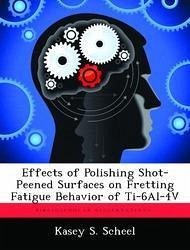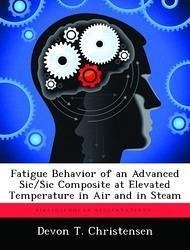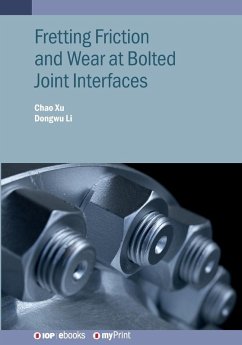
Effects of Polishing Shot-Peened Surfaces on Fretting Fatigue Behavior of Ti-6Al-4V
Versandkostenfrei!
Versandfertig in über 4 Wochen
15,99 €
inkl. MwSt.

PAYBACK Punkte
8 °P sammeln!
The research of this thesis was done to investigate the effects of polishing a shot-peened specimen of Ti-6Al-4V on the fretting fatigue life. The shot-peening process, though one of the most beneficial techniques in prolonging fretting fatigue life, creates a textured surface that may lead to problems on the micro level. This research was done in an attempt to further improve the peening process by examining the effects of another surface treatment to be used in conjunction, surface polishing. The rough peened surface may contain abrupt changes in surface geometry that act as stress risers, w...
The research of this thesis was done to investigate the effects of polishing a shot-peened specimen of Ti-6Al-4V on the fretting fatigue life. The shot-peening process, though one of the most beneficial techniques in prolonging fretting fatigue life, creates a textured surface that may lead to problems on the micro level. This research was done in an attempt to further improve the peening process by examining the effects of another surface treatment to be used in conjunction, surface polishing. The rough peened surface may contain abrupt changes in surface geometry that act as stress risers, which are more highly prone to crack initiation. Specimens were hand polished after they were peened to remove approximately 25 microns of material from the surface to remove all stress risers while preserving the beneficial residual stresses created by peening. Experiments designed to simulate fretting fatigue similar to previous research were conducted until specimens fractured. Seven experiments were conducted using titanium allow Ti-6Al-4V, shot peened using 7A intensity. All tests were run at ambient air temperature. Fatigue parameters, such as stress range and effective stress, were analyzed. Fretting fatigue conditions were determined and surface roughness measurements of polished and unpolished specimens were taken. It was concluded that, though fatigue life was improved over that of un-peened specimens, the polishing process did not improve the fretting fatigue life of the alloy. This work has been selected by scholars as being culturally important, and is part of the knowledge base of civilization as we know it. This work was reproduced from the original artifact, and remains as true to the original work as possible. Therefore, you will see the original copyright references, library stamps (as most of these works have been housed in our most important libraries around the world), and other notations in the work. This work is in the public domain in the United States of America, and possibly other nations. Within the United States, you may freely copy and distribute this work, as no entity (individual or corporate) has a copyright on the body of the work. As a reproduction of a historical artifact, this work may contain missing or blurred pages, poor pictures, errant marks, etc. Scholars believe, and we concur, that this work is important enough to be preserved, reproduced, and made generally available to the public. We appreciate your support of the preservation process, and thank you for being an important part of keeping this knowledge alive and relevant.












